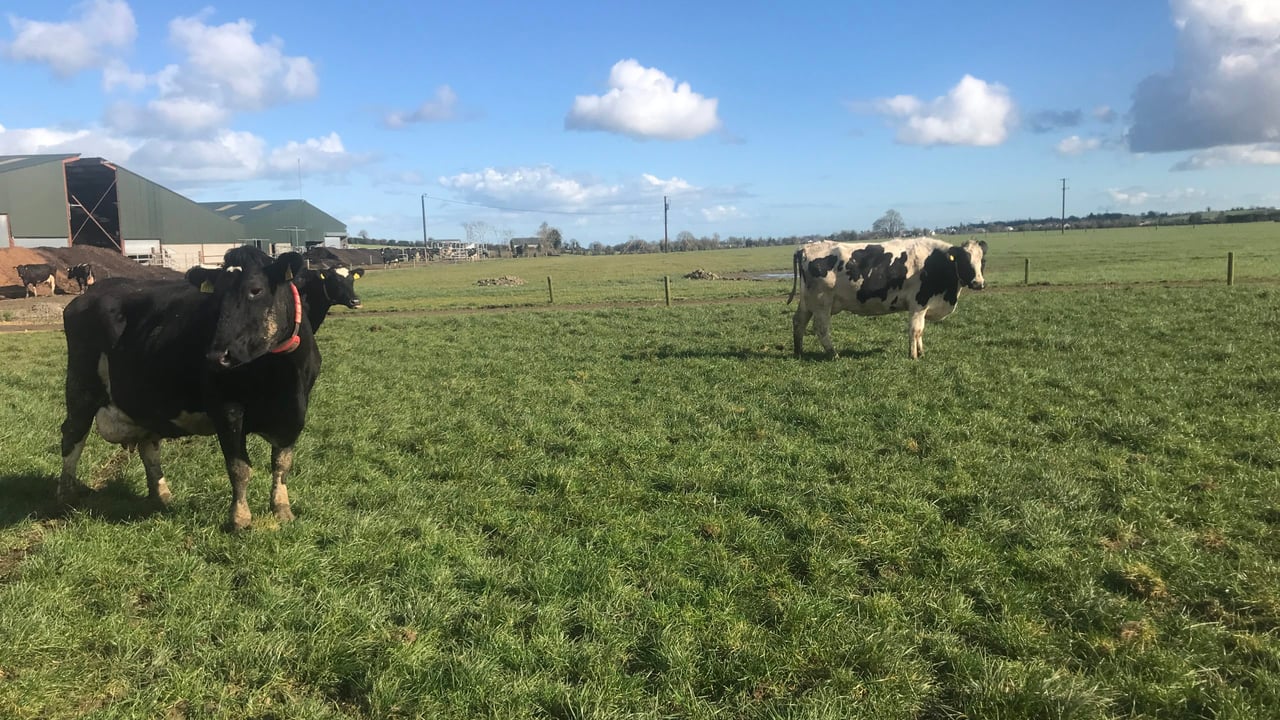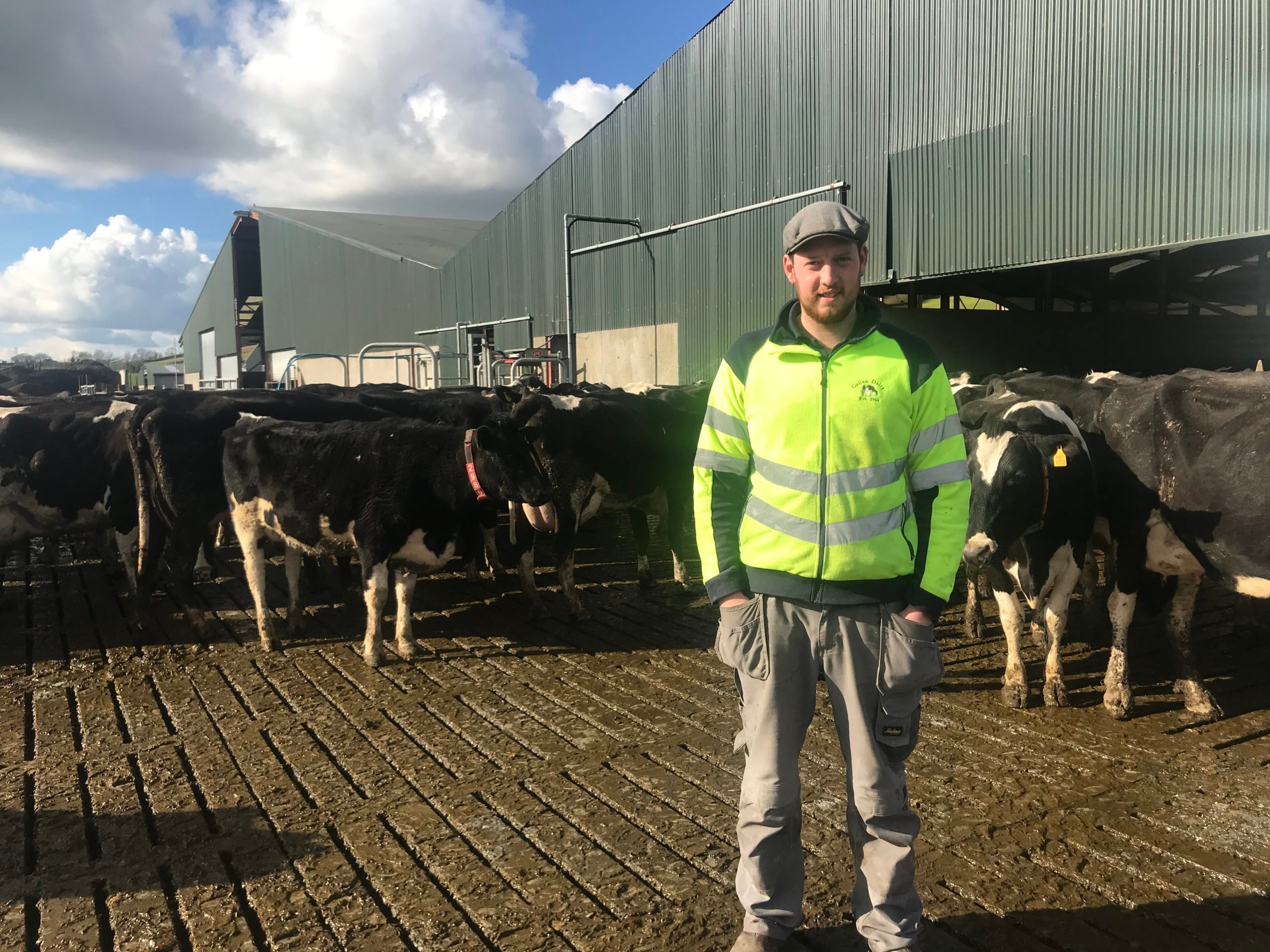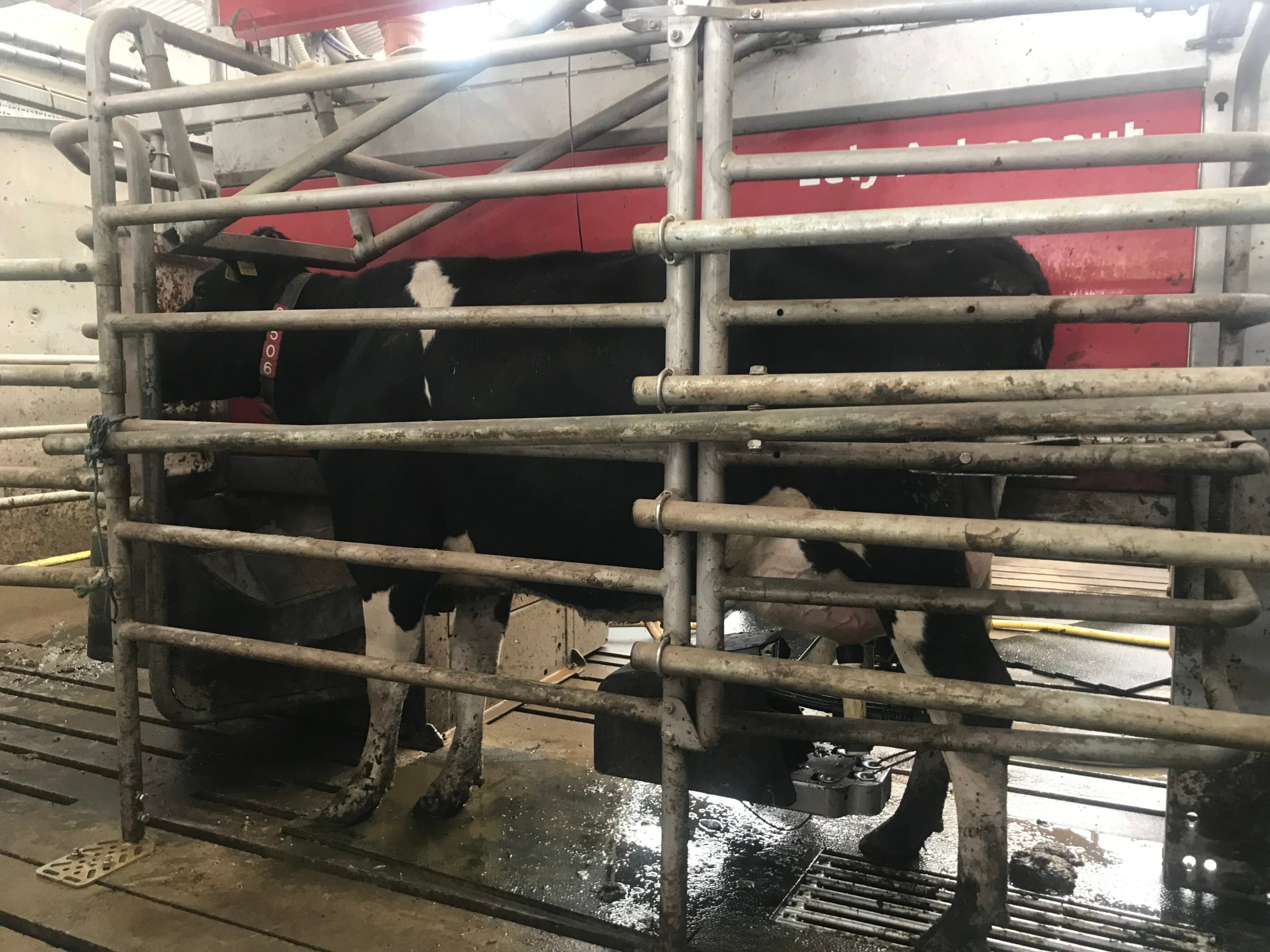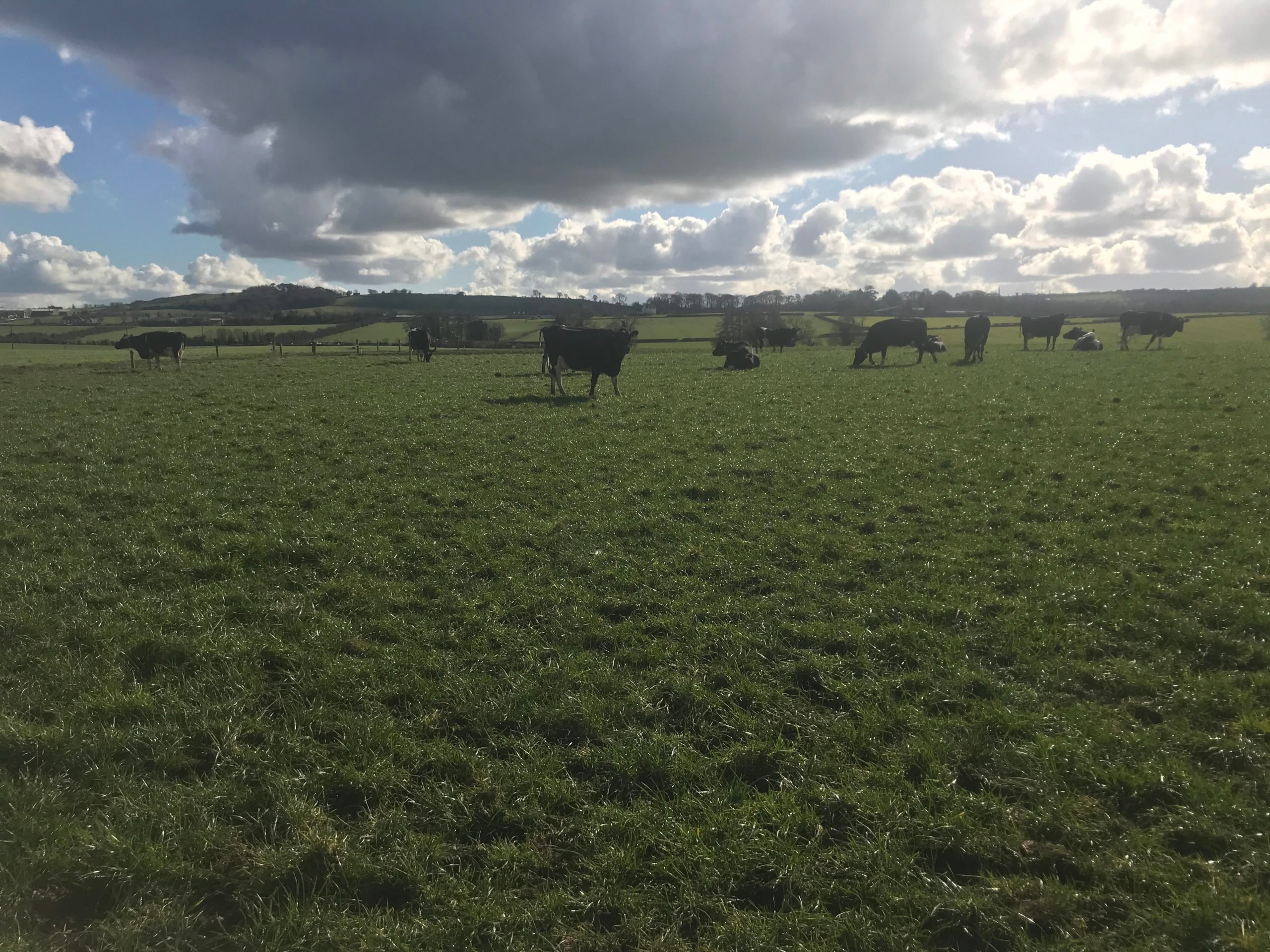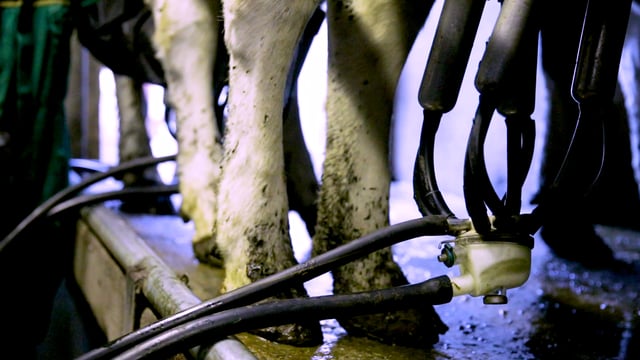Dairy Focus: Synchronising 480 cows in Co. Louth
For this week’s Dairy Focus, Agriland made the trip to the Wee county to meet with Barry Callan on his family's dairy farm just outside Ardee.
The Co. Louth farm is operated by Michael and his three son Sean, Conor and Barry, along with Joe who has worked on the Callans farm for over 20 years.
The Callans are milking 480 cows on seven Lely robots, with 130 cows milked on the home farm and 350 milked on the out-farm.
The home farm is operated as a split-calving system, while the out-farm is spring calving.
Crossbreeding was implemented in the herd, but the Callans have now moved away from that and are using more Friesian and Holstein genetics.
"We are trying to breed a 7,000L cow producing at least 600kg of milk solids. We have found that type of cows suits our farm the best and the system we operate," Barry said.
"Not every cow suits the robots, slow milkers can use up a lot of time. Our average cow takes eight minutes to milk, but some can take up to 20 minutes.
"Because of this milking speed has become a major focus of our breeding programme in recent years."
Labour
A mixed farming system was operated on the farm for many years, with dairy, beef and tillage enterprises.
In 2011 the decision was made to focus on dairy farming, although a small tillage operation remains.
The Callans started milking on the out-farm in 2011 in a 30-unit herringbone parlour.
But, like many dairy farms, they were finding it increasingly difficult to find people to milk.
Then in 2016 Michael had a farm accident, which put him out of action for a number of months. The family then started looking into robots and transitioned both farms to robots in 2017.
The Callans now have seven robots on the two farms, with Barry stating that: "We definitely wouldn't look at anything else now."
Breeding
The calving and breeding season are two of the most labour-intensive times on dairy farms. To offset some of the labour requirements, the Callans introduced a synchronisation program.
Giving some insight, Barry said: "We were using tail paint and scratch cards, but we weren't overly happy with the result we were getting.
"The following year we synchronised the cows as well and we been doing it ever since."
Commenting further, Barry said: "What we really like about it is how much it reduces the workload. Although it is a busy period when you're doing the programme, once we have everything AI'd [artificially inseminated] we put out beef stockbulls. The labour input for the breeding season is then over.
"We also like that we have all our heifer calves born in a short period and then they are a nice even group."
Synchronisation programme
A synchronisation programme is used on both the cows and heifers on the farm, with the Callans having great results.
Giving some more insight into the programme, Barry said: "It can be a bit hectic when the programmes are taking place and we generally run the heifers 10 days before the cows.
"That allows you to focus on other jobs that need to be done on a dairy farm.
"Any cows that held their cleaning or had a hard calving is checked before breeding. Anything that is still a bit 'iffy' doesn't go on the programme."
The programme for heifers is eight days:
A slightly different programme is used on the cows.
The programme for cows is ten days:
Continuing, Barry said: "There is generally two people serving cows and two or three more loading straws for them.
"We would keep an eye on the first repeat to give the bulls a hand and we would AI a few cows - just because of the sheer number of cows and heifers that come into heat.
"We have 450 sexed dairy straws ordered and 100 beef straws ordered so we are going to be more selective this year.
"We have seen a major benefit of using the sexed semen. The way the trade for calves is, you are better selling a heifer calf than a bull calf."
Conception rates
Conception rates being achieved are excellent, with calving starting at the end of January and only 15 cows remaining when we visited the farm.
"Conception rates are improving each year, a lot of it can depend on the weather," Barry said.
"Conception rates for the cows was a little bit lower at 55%. Last year we used all sexed semen on heifers and 80% sexed on cows, this year we are going to use 100% sexed semen."
Calving season
Other than the benefits during the breeding season, the use of a synchronisation programme has benefits during the calving season.
The programme increases the number of cows calving in a short period and again, reduces the labour demand.
"Even with the programme you're still looking at a three-week period where cows are calving.
"You do get a bit of lull between the programme and repeats where you get another burst of calves."
Benefits
Giving some insights into the benefits of operating the programme, Barry said: "Having an even bunch of calves is a major benefit, from a management point of view.
"Between the youngest and oldest calf there is only about three weeks. There is rarely a heifer that we have to pull out because they are too small for the bulls.
"You also have a lot of milk coming from the start, which works well for using milking cows on robots.
"We believe that the benefits you get from operating the programme outweigh the cost of it."
Dairy Focus
To read more Dairy Focus articles on Agriland, click here.

